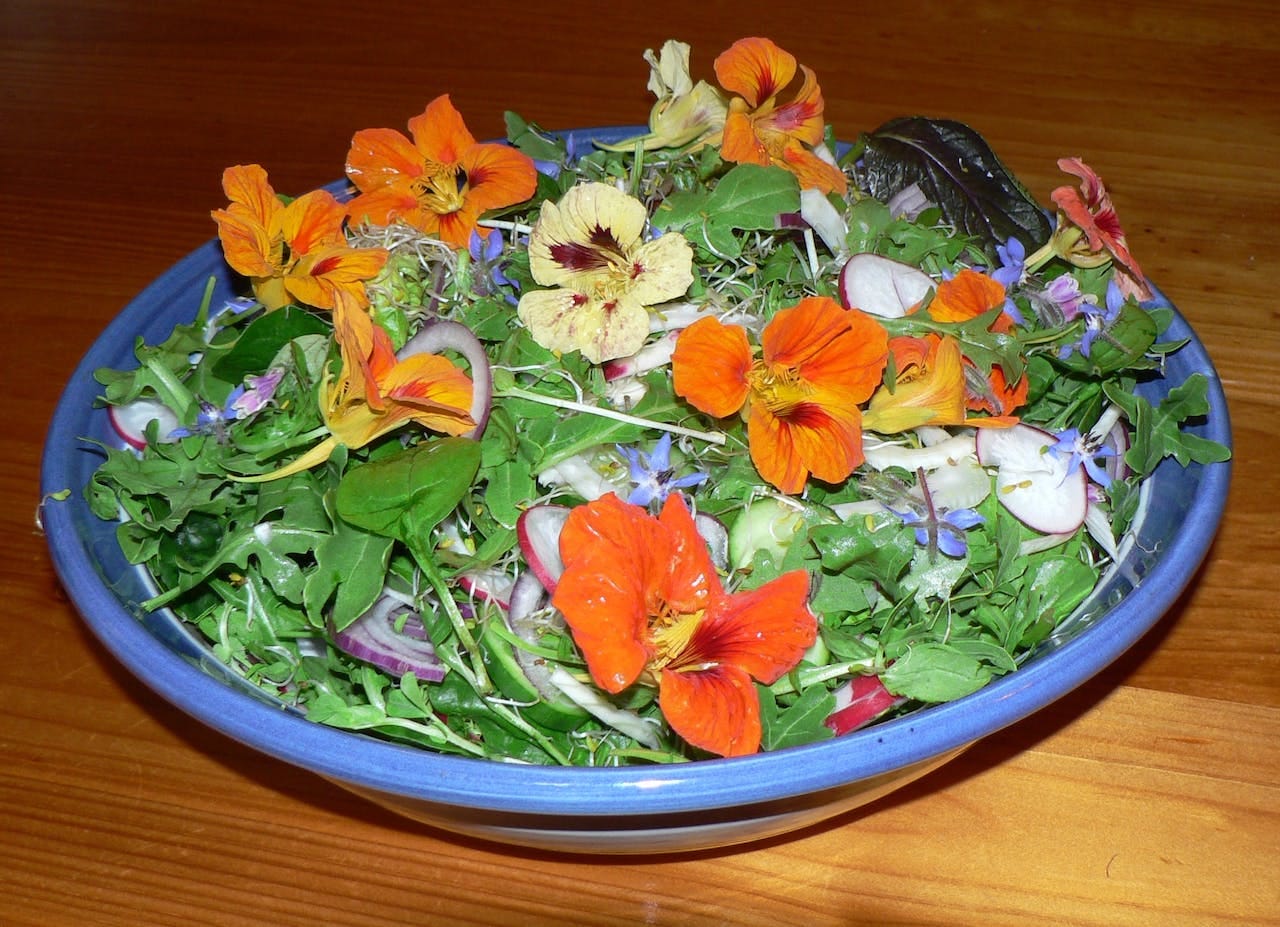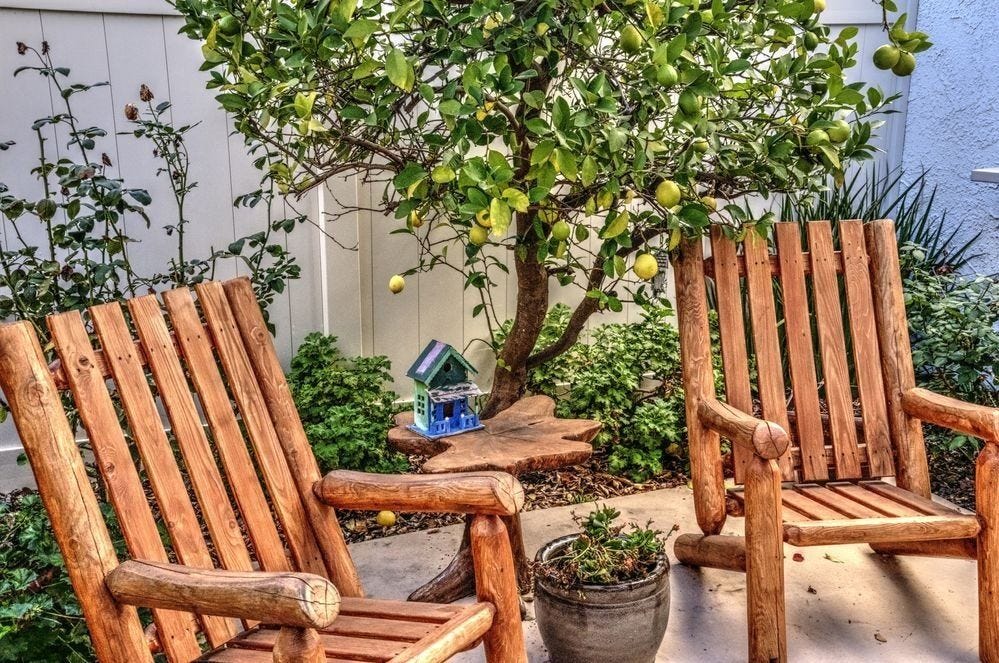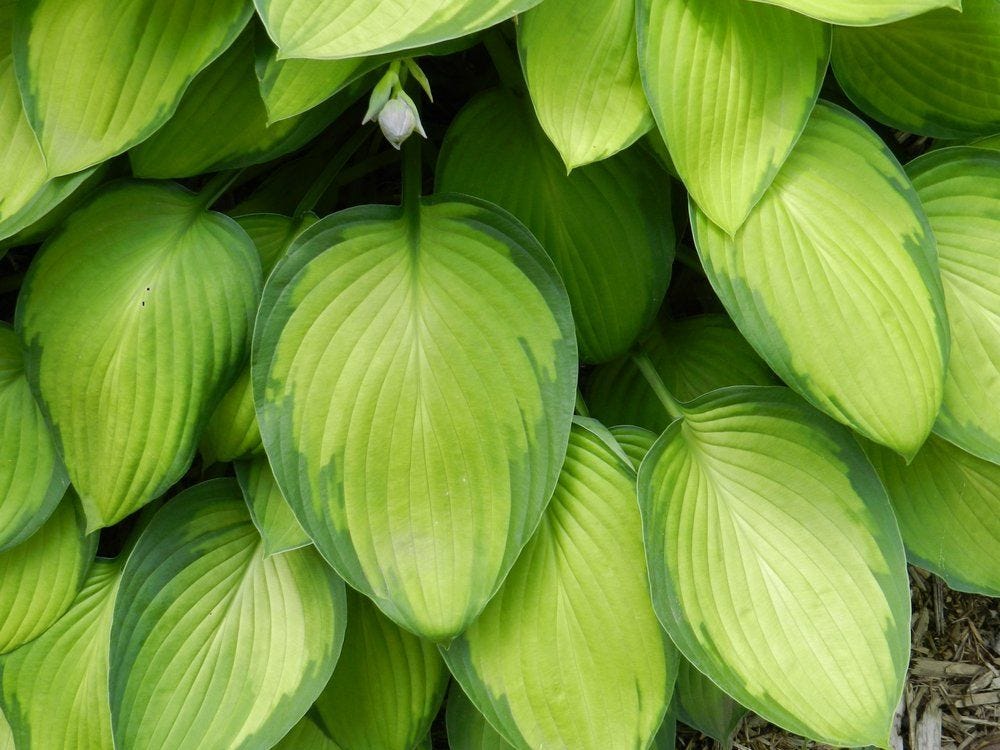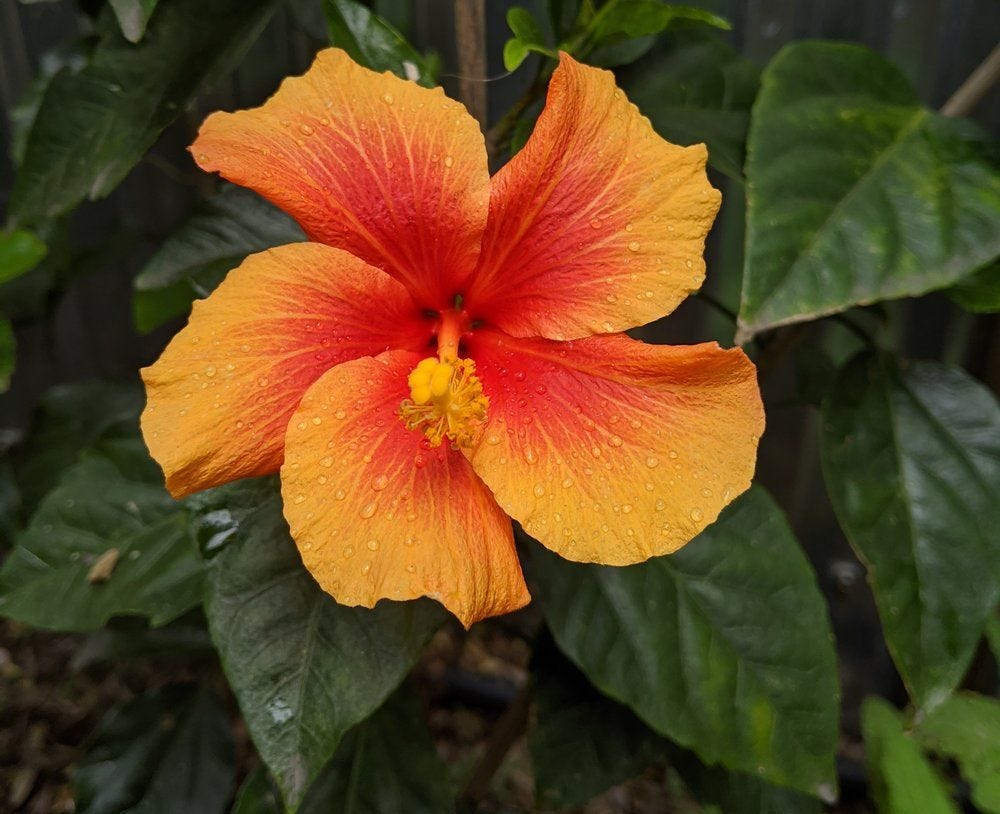Edimental Gardening
Edimental gardening is one of the top garden themes to watch out for in 2024. Edimental gardening is a recent trend in horticulture where plants are chosen for both their ornamental and edible qualities.
You may have heard the term "edimental" as a new buzzword in gardening. Garden Design magazine listed edimental gardening as one of the top garden trends to watch out for in 2024 alongside gravelscaping (which I discussed in a recent blog post).
So what exactly is edimental gardening?
No dictionary has a definition for this word. The word edimental was coined by horticulturalist Stephen Barstow about 10 years ago and has now started to gain in popular use rapidly. Edimental is a portmanteau word to describe plants that have edible (Edi-) and ornamental (-mental) qualities. An edimental is a plant that grows for more than a year and can be a perennial, shrub, or tree. Some hardy annuals that self-seed and grow with little care can also be considered as edimentals.
Creating a planting scheme with edimentals is very useful if you want to grow some of your own produce without dedicating an area of your garden exclusively to food production.
The trend of Edimental gardens was a core feature at this year's Chelsea Flower Show, where Harry Holding's "School Food Matters" garden won the People's Choice Award. The garden was composed entirely of edible plants.
Edimental Gardens are Low Maintenance
One of the key benefits of edimentals is that they do not have the same level of maintenance as needed for edible annual plants as you don't need to sow seeds or new plants and tend your soil. You will also not have to worry so much about losing an entire crop to pests or drought. As long-lived plants, edimentals generally have deeper root systems than annual edibles, making them more resilient and able to provide edible benefits for multiple seasons.
Edimental Garden Design
Edimental plants are usually planted in mixed planting with other ornamental plants. This makes this type of edible gardening more informal than a typical kitchen garden, and you will most likely forage for edible leaves, flowers, and fruit as you enjoy the garden, rather than harvesting an entire crop at once.
Edimentals work well in naturalistic and wildlife gardens, as their edible qualities are an attraction to both wildlife and people. This can create problems as your wild visitors could easily eat all your fruit before you get a chance to pick them. To avoid this, plan an area where you can install a feeder away from your fruiting edimentals as well as a bird bath. Often birds eat fruit because they are thirsty, so distracting them with water will lessen their appetite for fruit.
Edimental gardens are great for families with small children, as this will encourage kids to get outside, explore, and forage the edibles in your garden. I have fond memories of picking blackberries in my grandparent's garden when I was a child.
Edimental Plants to Grow in Your Garden
There are a lot of edimental plants, and you may even have some in your garden already. Edimentals fall into several categories, according to their edible qualities:
Edible Leaves
Edible Roots (Tubers and Bulbs)
Edible Fruit
Edible Flowers
Culinary Herbs
Here are 8 common garden edimental plants:
Nasturtium (Tropaeolum majus)
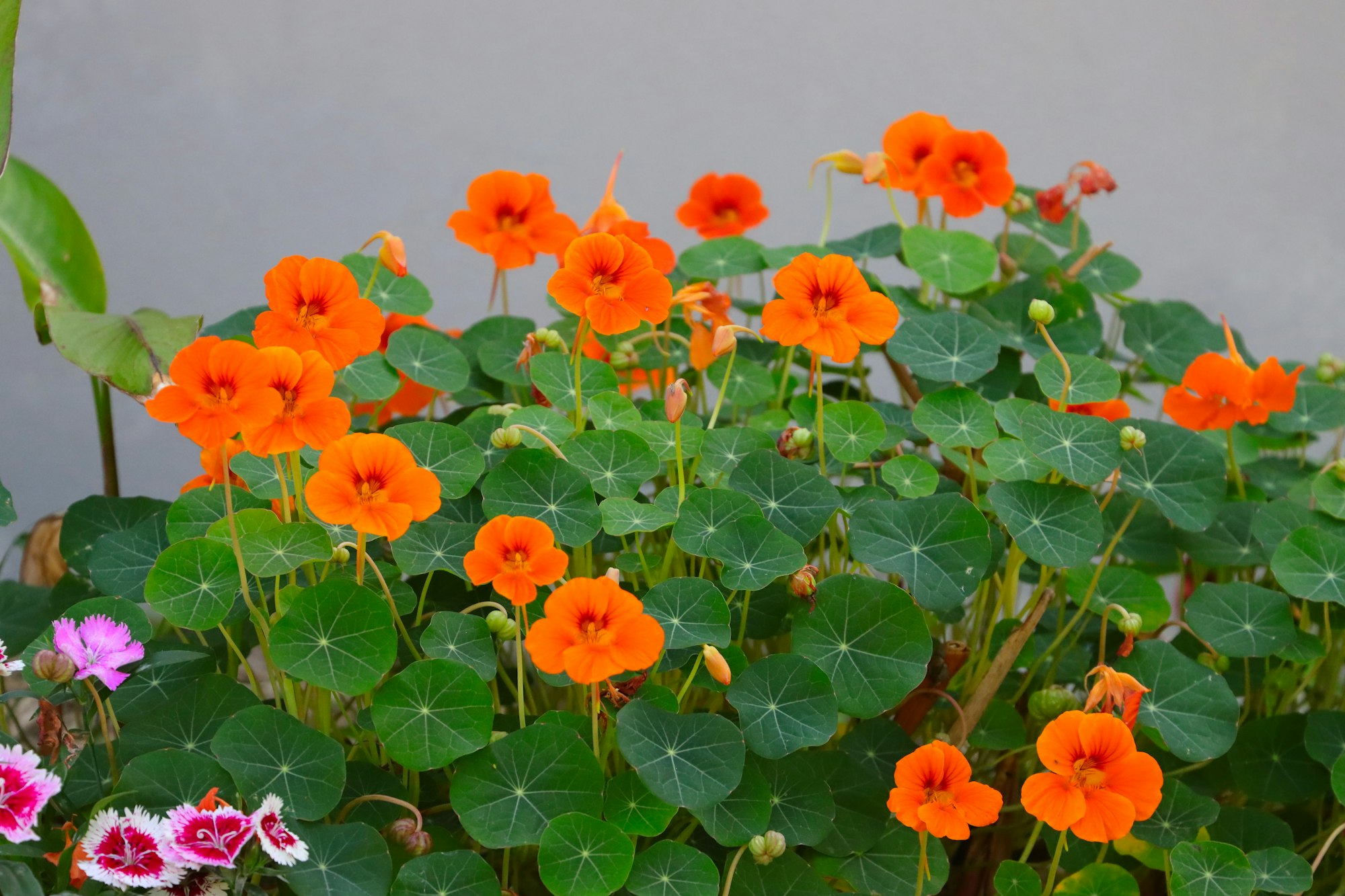
Nasturtium is found in many home gardens. This attractive plant requires little water and puts on a show of warm-colored flowers when grown in sunny areas. All parts of the nasturtium plant are edible. Nasturtium flowers are often used to decorate salads and also used in stir-fry dishes. The flower has a taste similar to watercress. The stems have a similar flavor and a texture akin to chives. While all parts of the plant have a slight peppery taste, the leaves are slightly more bitter.
Rosemary (Salvia rosmarinus)
Rosemary is a very fragrant plant, and its leaves are useful as a culinary herb. Rosemary pairs well with Roasted vegetables and meats, particularly lamb. Rosemary is an attractive plant that is easy to care for in the garden. In winter, blue flowers appear on the stems to add some color in a normally dormant period in the garden. Rosemary is one of the oldest known plants used as an edimental, dating back to the times of Ancient Roman Gardens.
Artichoke (Cynara cardunculus)
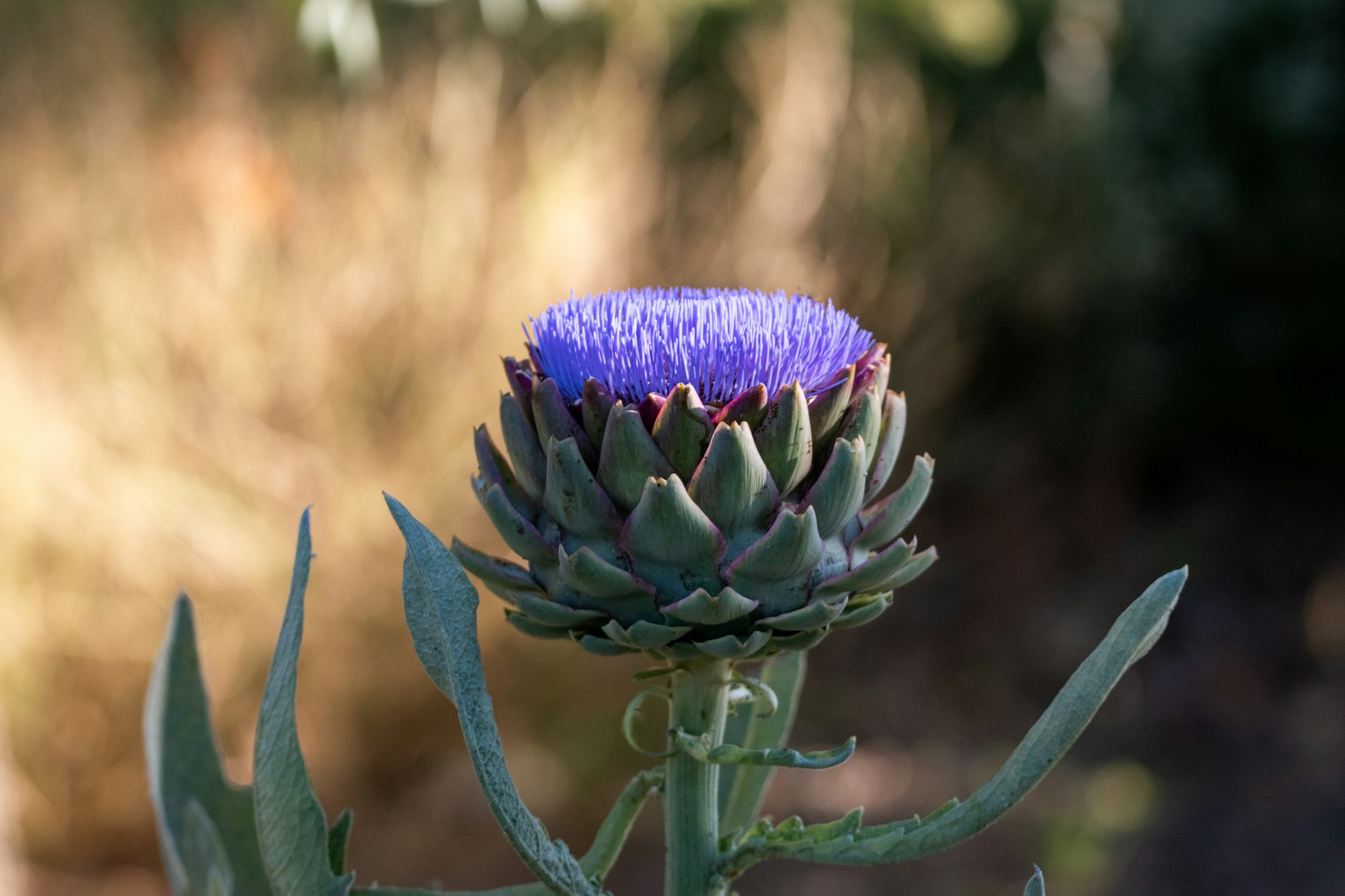
Globe Artichoke is an attractive pant with blue/green foliage and a striking, architectural form. The flower heads start off with an attractive blue thistle-like flower, which then grows into a fruit (Heart). Artichokes are used extensively in Mediterranean cuisine.
Citrus Trees
Citrus Trees and other small fruiting trees can make great trees for shading patios. Dwarf citrus trees can also be grown in containers, which is helpful if you live in a colder climate as they can be taken indoors for the Winter. The yellow/orange colored fruits of citrus trees can help break up the monotony of green leaves in your garden.
Hosta (Hosta spp.)
Hostas are a very popular ornamental plant that most people do not know is also edible. In fact, all parts of a Hosta plant are edible and are commonly cultivated as a food crop in Japan. In Spring, Hosta shoots (hostons) emerge from the ground and these can be harvested and eaten, with a taste and texture similar to Asparagus. The leaves of Hosta are also edible and taste similar to Spinach with older leaves tasting more bitter. Even the flowers are edible with a sweet taste that can be used sparingly in salads.
Fennel (Foeniculum vulgare)
Many cooks will be familiar with Fennel, which adds an anise flavour to recipes. Fennel is easy to grow in the garden and its tall stems can be used in mixed plantings to great effect. While most people use the bulbs of fennel for cooking, the leaves, stems and flowers can also be used in a variety of Mediterranean dishes. Fennel is a good plant to use in a butterfly garden.
Elderberry (Sambucus spp.)
Elderberries are a group of large shrubs, that can be pruned up to form a patio tree. The berries that they are named after can be used to make jams and wine. A word of warning: the berries are poisonous when raw and must be cooked before consumption in any form. Elderberry extract is also considered to have healing properties and can boost your immune system, although this has not been scientifically proven.
Hibiscus (Hibiscus rosa sinensis)
The flowers of Chinese Hibiscus are edible. I first discovered this with a Hibiscus in my garden, from which my dog would eat the spent flowers when she was a puppy. Hibiscus flowers are used in salads in Polynesian cuisine. Another type of Hibiscus (H. sabdariffa) is used to make teas and cold drinks, which are very popular in Central America and the Caribbean. Hibiscus infused drinks have been shown to help lower blood pressure for people with high blood pressure.
Precautions for Edimental Gardens
When planning an edimental garden, one should limit the use of pesticides as they can introduce toxins that make eating any garden produce a health risk. Ask nurseries if the plants have been sprayed with pesticides - most vegetable and herb plants that are sold for edible gardens will not be sprayed with harmful pesticides but some of the plants that are normally grown as ornamentals will be treated. If this is the case, you should wait until the following year to harvest any of these plants.
Think about how easy it is to forage edible plants by making space to allow access without disturbing other plants. This is especially important with fruiting plants as any unpicked fruit will fall to the ground and start rotting, which will attract rodents and fruit flies.




